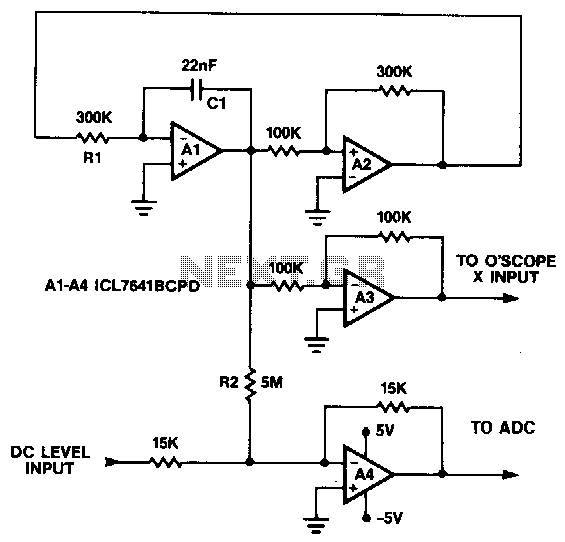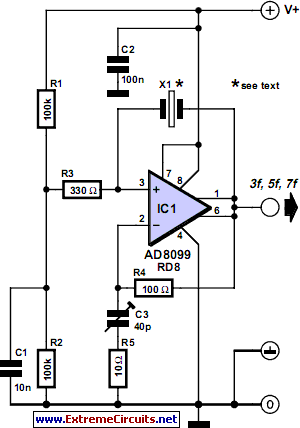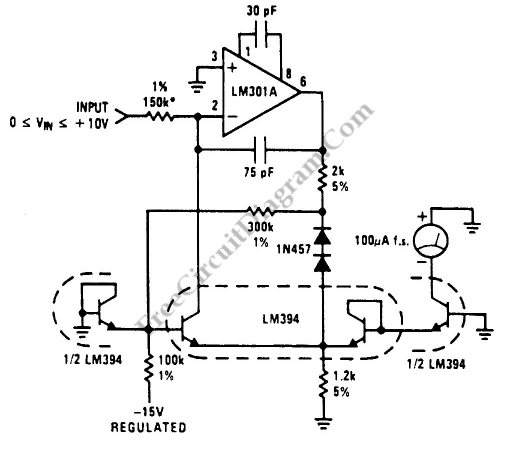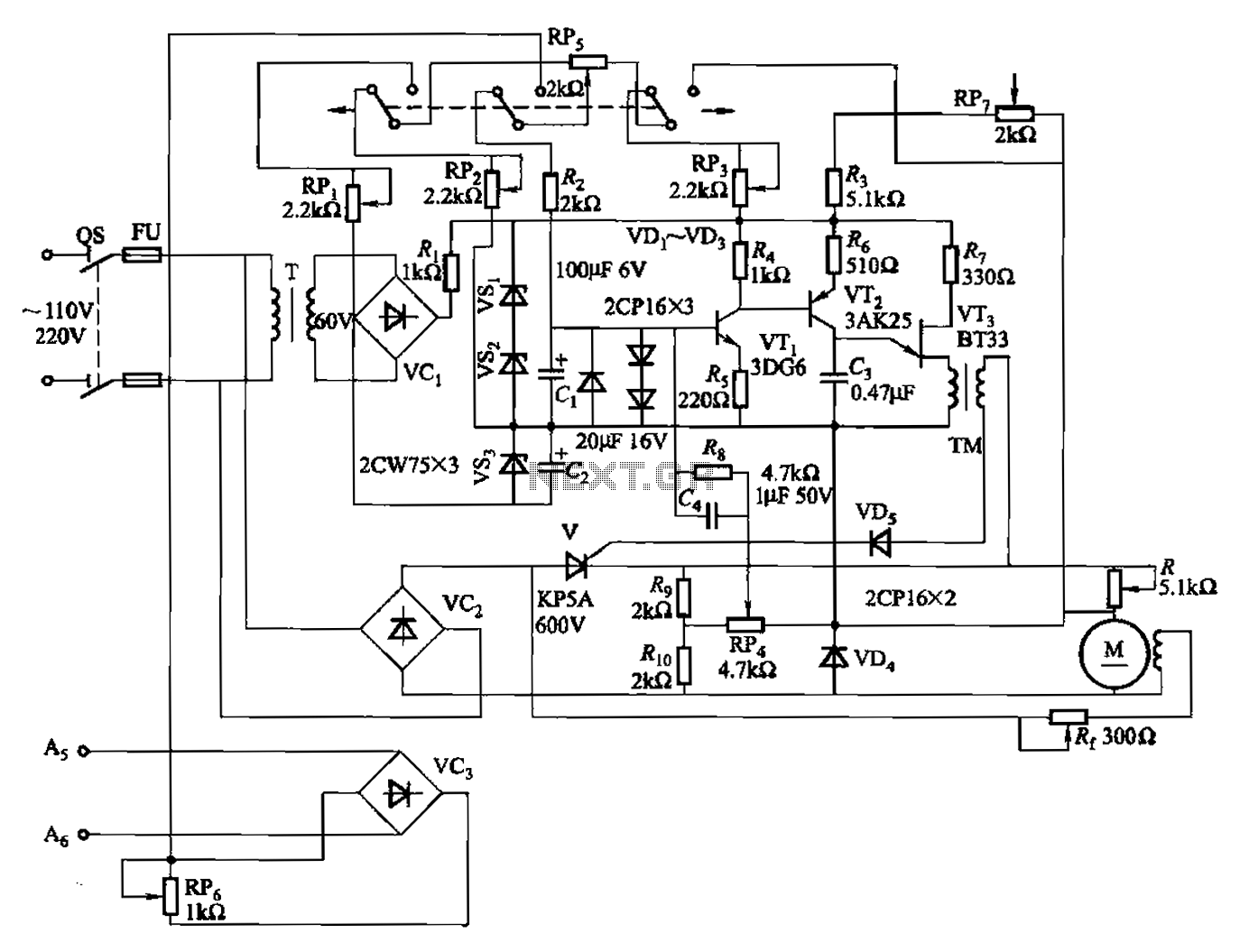
ua 741 square wave generator
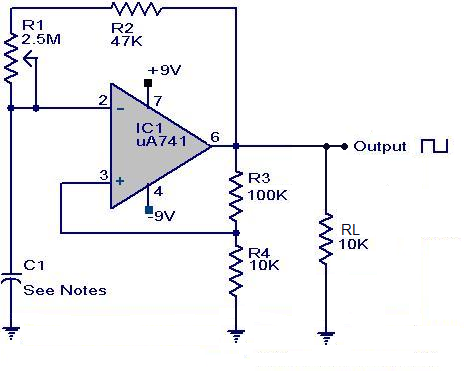
A square wave generator using the UA741 integrated circuit is presented. This circuit employs positive feedback for Schmitt trigger action and negative feedback to measure the waveform timing. Initially, it is assumed that the output is high and capacitor C1 is fully discharged. C1 then starts charging through resistors R2 and R1. Once the voltage across C1 exceeds the junction of resistors R3 and R4, the output rapidly transitions to a fully negative voltage. C1 subsequently discharges and recharges in the opposite direction. Conversely, when the negative voltage across C1 drops below the voltage at pin 3, the circuit quickly returns to a fully positive output, creating a continuous cycle.
The square wave generator circuit utilizing the UA741 operational amplifier is a fundamental electronic component widely used for generating oscillating signals. The circuit's configuration includes a feedback mechanism that allows it to switch between high and low output states, thereby producing a square wave signal.
The positive feedback employed in the Schmitt trigger configuration is crucial for establishing hysteresis, which helps to prevent noise from causing false triggering of the output. In this circuit, the resistors R1, R2, R3, and R4 are strategically selected to set the threshold voltages at which the output state changes.
When C1 is charged through R2 and R1, the voltage across the capacitor rises until it reaches a predefined threshold determined by the voltage divider formed by R3 and R4. At this point, the UA741's output switches from a high state to a low state, creating a negative voltage output. This transition causes C1 to begin discharging, which in turn leads to a rapid change in the output state back to high once the capacitor voltage falls below the threshold defined by pin 3 of the UA741.
The cycle of charging and discharging of C1, combined with the feedback mechanism, results in an oscillatory behavior that generates a square wave output. The frequency of the output square wave can be adjusted by varying the values of R1, R2, and C1, allowing for flexibility in applications requiring specific timing characteristics. This type of square wave generator is commonly used in timer circuits, clock pulse generation, and other applications where a stable oscillating signal is needed.A square wave generator with IC UA741 range shown here. The circuit uses positive feedback to the Schmitt trigger action and negative feedback to measure the time of the waveform. Let us assume that the output is high and the capacitor C1 is fully discharged. C1 now begins to charge through R2 and C1 R1. When tension rises above the junction of R3 an d R4, the output changes rapidly totally negative voltage. C1 Now begins the unloading and reloading in the direction. Again contrast, when the negative voltage across C1 falls below that at pin 3, the circuit is returned quickly to totally positive repetitions value. The output endless cycle. 🔗 External reference
The square wave generator circuit utilizing the UA741 operational amplifier is a fundamental electronic component widely used for generating oscillating signals. The circuit's configuration includes a feedback mechanism that allows it to switch between high and low output states, thereby producing a square wave signal.
The positive feedback employed in the Schmitt trigger configuration is crucial for establishing hysteresis, which helps to prevent noise from causing false triggering of the output. In this circuit, the resistors R1, R2, R3, and R4 are strategically selected to set the threshold voltages at which the output state changes.
When C1 is charged through R2 and R1, the voltage across the capacitor rises until it reaches a predefined threshold determined by the voltage divider formed by R3 and R4. At this point, the UA741's output switches from a high state to a low state, creating a negative voltage output. This transition causes C1 to begin discharging, which in turn leads to a rapid change in the output state back to high once the capacitor voltage falls below the threshold defined by pin 3 of the UA741.
The cycle of charging and discharging of C1, combined with the feedback mechanism, results in an oscillatory behavior that generates a square wave output. The frequency of the output square wave can be adjusted by varying the values of R1, R2, and C1, allowing for flexibility in applications requiring specific timing characteristics. This type of square wave generator is commonly used in timer circuits, clock pulse generation, and other applications where a stable oscillating signal is needed.A square wave generator with IC UA741 range shown here. The circuit uses positive feedback to the Schmitt trigger action and negative feedback to measure the time of the waveform. Let us assume that the output is high and the capacitor C1 is fully discharged. C1 now begins to charge through R2 and C1 R1. When tension rises above the junction of R3 an d R4, the output changes rapidly totally negative voltage. C1 Now begins the unloading and reloading in the direction. Again contrast, when the negative voltage across C1 falls below that at pin 3, the circuit is returned quickly to totally positive repetitions value. The output endless cycle. 🔗 External reference
